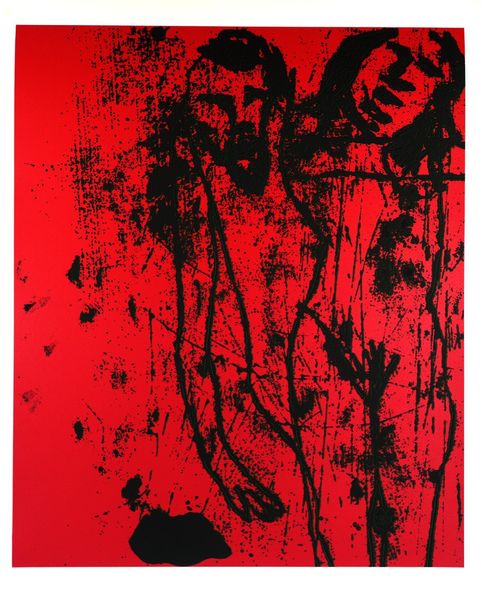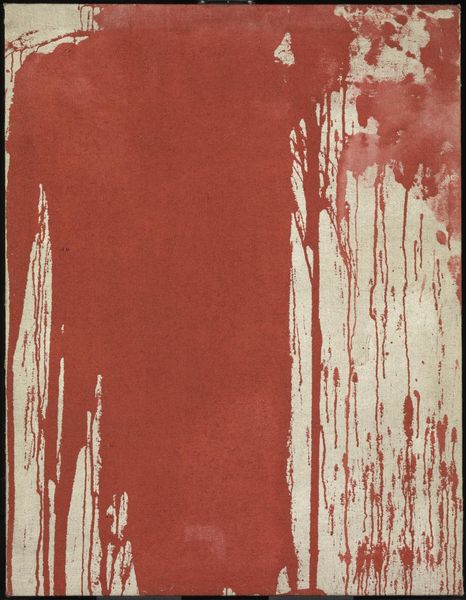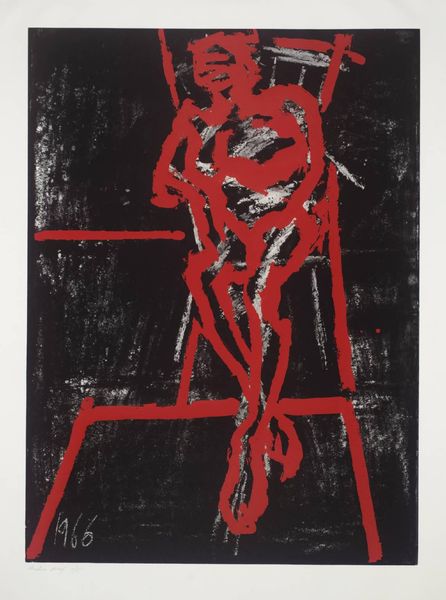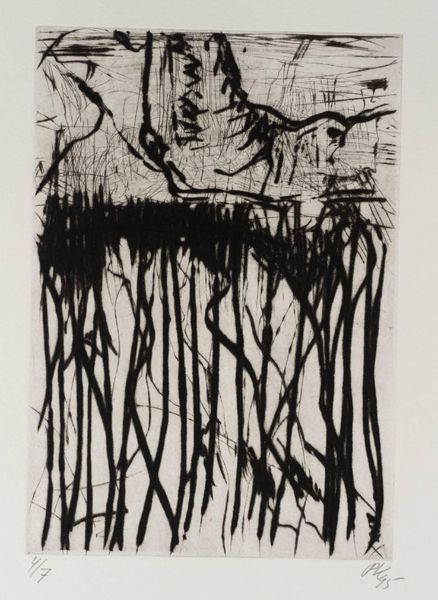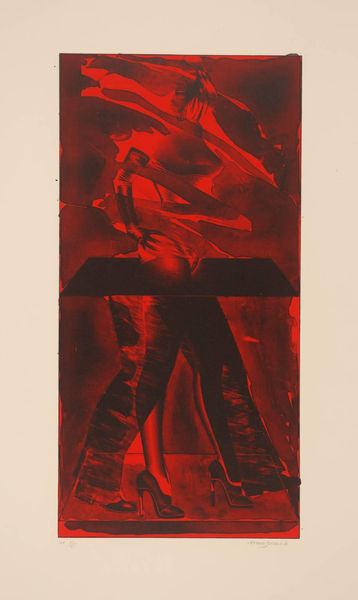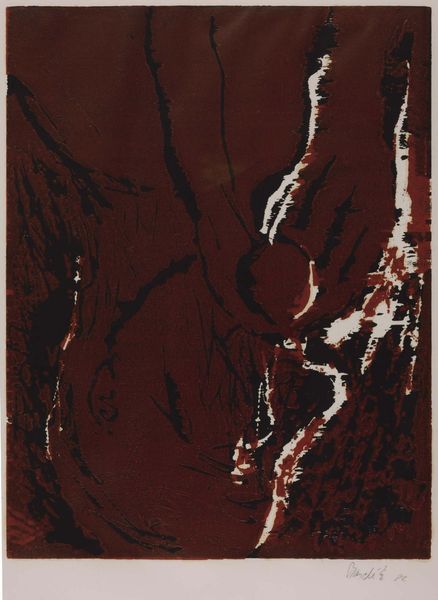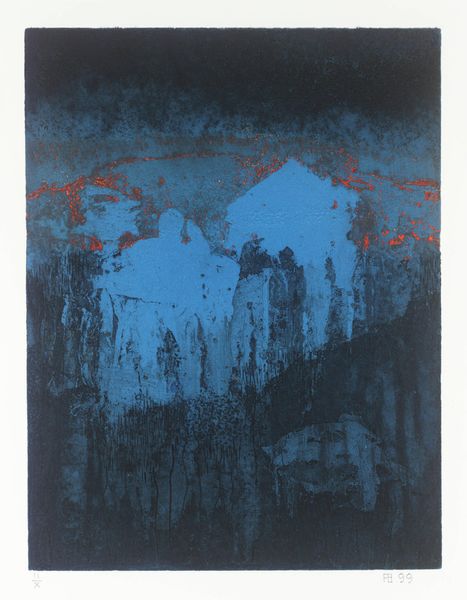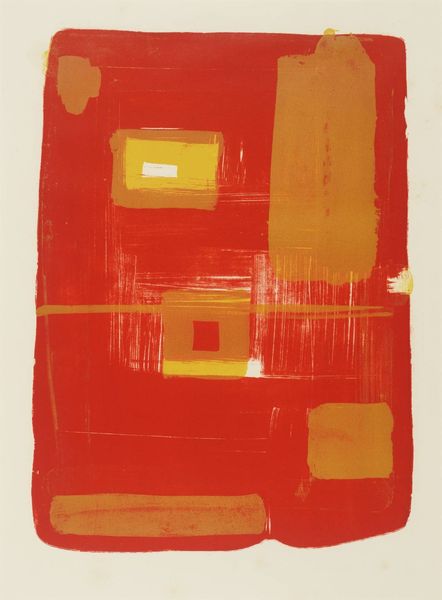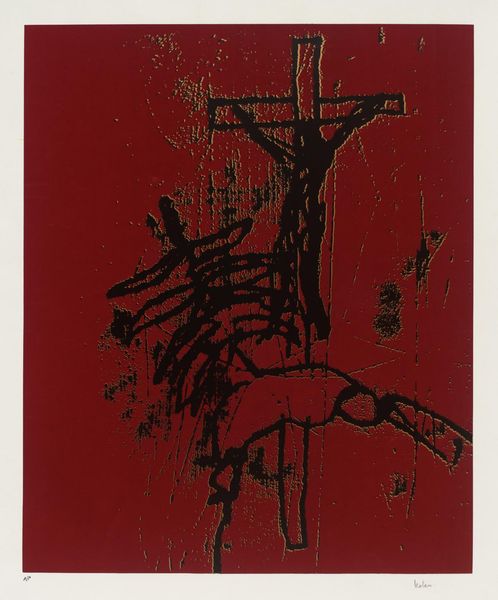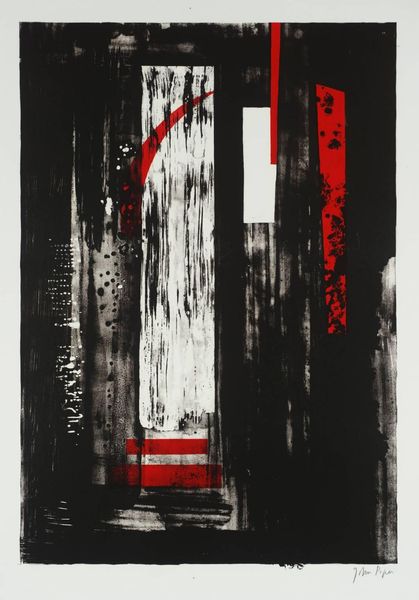
Dimensions: unconfirmed: 510 x 410 mm
Copyright: © The Benjamin Trust | CC-BY-NC-ND 4.0 DEED, Photo: Tate
Curator: Anthony Benjamin, born in 1931, created this work, "Element." It's part of the Tate Collections. Editor: Wow, this piece really hits you. It's like looking into a storm of blood, a visceral experience. The scale adds to its intensity. Curator: The dominant use of red, of course, is powerful. Across cultures, red signifies strong emotions, like passion and rage, and of course, blood. Is it that symbolic weight that is influencing your impression? Editor: Absolutely. There’s a rawness to it, a sense of untamed energy trying to break free. I sense confinement, even. Curator: The dimensions of the work are around 510 by 410 millimeters. Perhaps that restriction fuels your sense of energy constrained. Editor: Maybe! Whatever the cause, it's got me hooked. You know, it's curious how such an abstract piece can feel so deeply personal. Curator: Yes, a confluence of emotion, medium, and history. It's quite affecting. Editor: Right? I won't soon forget that splash of red.
Comments
Join the conversation
Join millions of artists and users on Artera today and experience the ultimate creative platform.
tate 8 months ago
⋮
This boxed portfolio consists of seven prints accompanied by seven poems by the Scottish poet W.S. Graham (1918-86). The group of poems is entitled The Seven Letters and each is titled Letter I to Letter VII. Each print is folded within a double-sized sheet on which a poem is printed. Nevertheless, the artist said that the images did not correspond to specific poems. Each print has its own title: Verbs of the Sea, Earl, Bright Hemisphere Blue, Cramasie, Emerald Depths, Prisms of Water, and Element. The prints are all etchings with aquatint, and both they and the poems are printed on Somerset TP paper. The production of the prints spanned two moments. In 1957, after two years living near St Ives in Cornwall, Benjamin enrolled at Atelier 17 in Paris, the teaching studio of the innovative printmaker S.W. Hayter. Benjamin was a friend of W.S. Graham's and had with him a copy of the poet's The Nightfishing (1955), a collection which included The Seven Letters. He elected to produce seven etchings in response to the poems as a tribute to their friendship. Starting in 1958 and continuing into the following year, he prepared the zinc plates and produced two sets of proofs - an initial set on poor-quality paper and a final proof on finer paper. The latter were lost when sent to the St George's Gallery, London. The prints were never editioned and the plates were forgotten until their rediscovery, still wrapped in French newspaper, in 1993. As a result, in 1999, an edition of 25 of each print (to be sold individually), plus a further ten boxed portfolios (numbered I-X, of which this is II), were produced in London by Hope Sufferance Press. With the exception of one, Emerald Deep, the colour was matched to the original poor-quality proofs. The fluid, gestural style of the prints is characteristic of work emanating from Atelier 17 towards the end of the 1950s and reflects the innovative techniques taught by Hayter. Rather than incise the image through a coat of varnish on the plate, the artist poured, dribbled or flung the varnish in a bodily gesture; in some cases, it was applied with a brush, thinned with turpentine and allowed to run. Once the plates had been immersed in acid, ink was worked into the etched design and a colour was applied across the intact areas, so that two-colour printing could be achieved in one go. This automatist style was somewhat different to the more controlled abstraction of the paintings that Benjamin had been making in Cornwall under the influence of Peter Lanyon. The relationship of the visual images to the poems is obtuse. Written in his complex, allusive style of the early 1950s, Graham's poems combine a symbolic landscape imagery with erotic undertones. Though the poet said they were addressed to his wife, they can be seen as dialogues with the reader, or the writer's internal discourse. In their use of landscape as a symbol for the self, they are close to the long poem The Nightfishing, in which a nocturnal fishing trip provides a metaphor for what Edwin Morgan described as Graham's 'obsessional preoccupation … the endless dyings and metamorphoses of the self' (quoted in Stephens, p.27). Benjamin has acknowledged that this title poem was also in his mind when he made the prints. While their aqueous designs may suit that association, the artist has compared the pictorial space with the shifting narrative space of the poetry. Further reading:Chris Stephens, 'Seven Etchings for Seven Letters' in Anthony Benjamin: Listening to Colour, London 2000, pp.24-8David Brown (ed.), St Ives: Twenty-five Years of Painting, Sculpture and Pottery, exhibition catalogue, Tate Gallery, London 1985 Chris StephensDecember 2000
